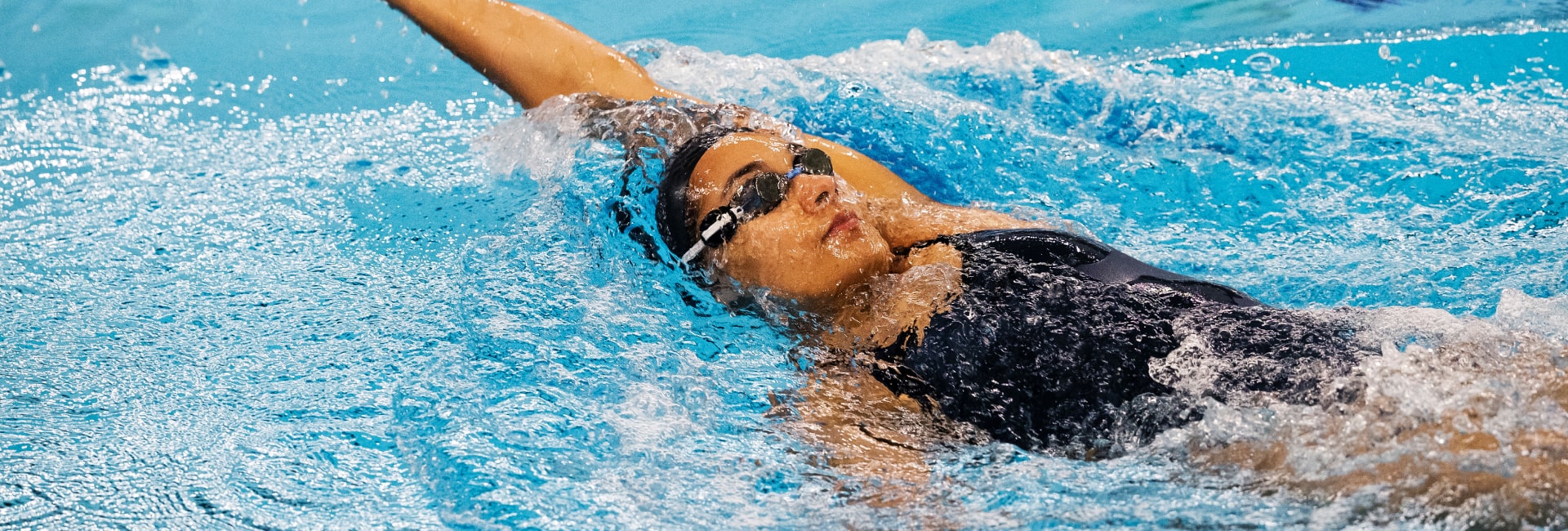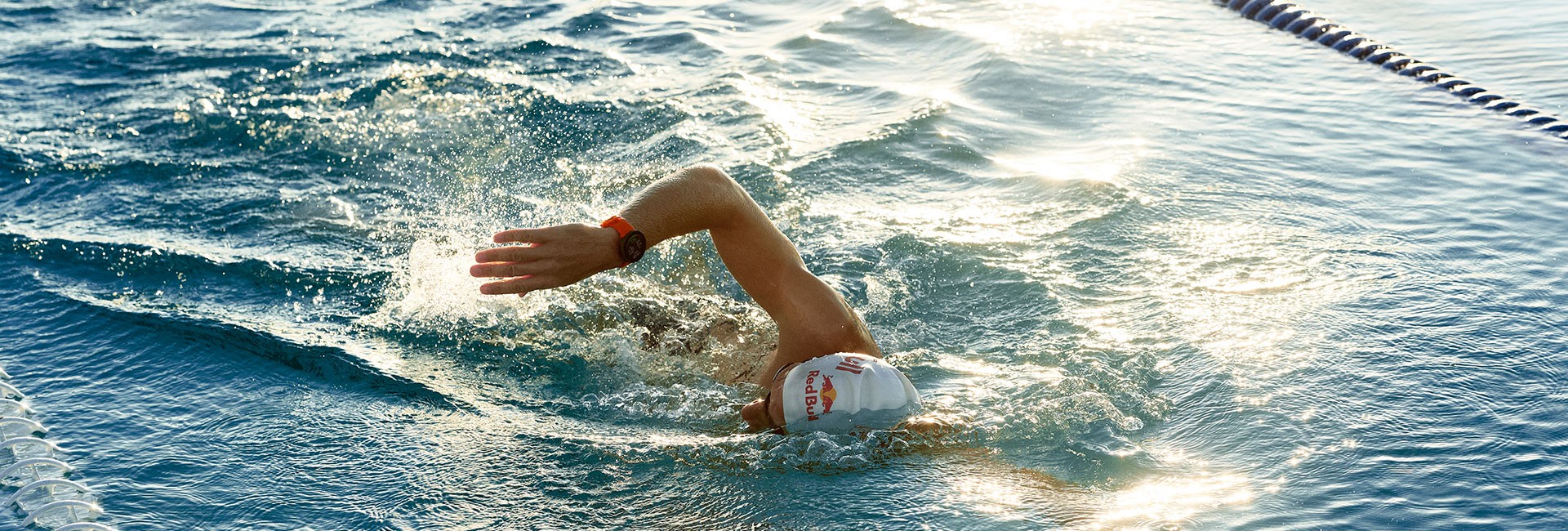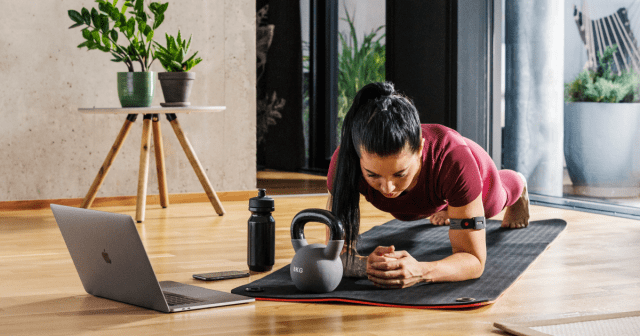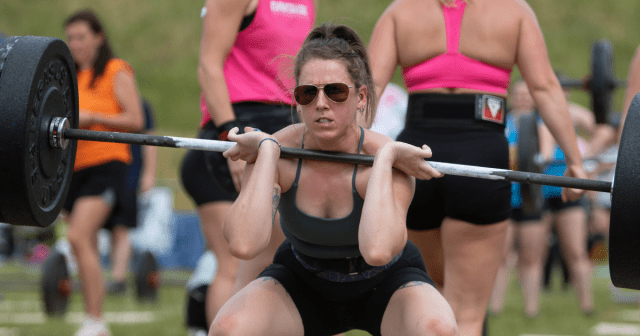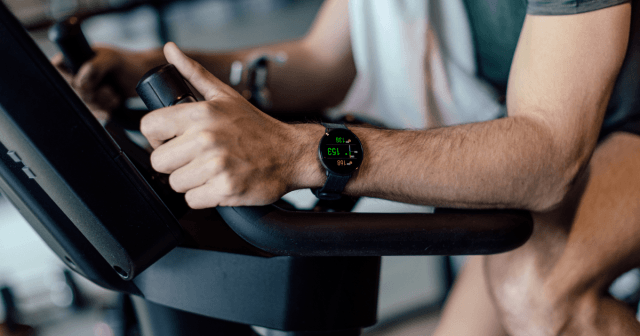Can a sports watch enhance your swimming? Absolutely. Not only can your watch provide insights on metrics such as splits, stroke rate, and pace, but it also recognizes your style of swimming and tracks your route (if you’re heading out into open water).
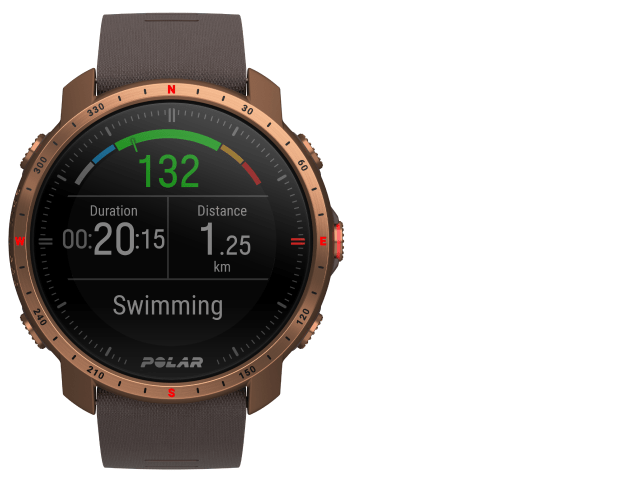
Here are the essential metrics and benefits when using your sports watch for swimming. Remember to sync your Polar device with Flow for a detailed visual representation of your swim data.
Essential metrics for Pool swimming
Goggles on and go! Just don’t forget to wear your sports watch in the pool because there are many swimming metrics available to help you understand your laps and give you the insights to improve.
Swim tip: Before you hit start on your pool swimming sports profile, update your Polar sports watch with the length of the pool you are swimming in. Simply go to Menu > Start Training > Pool Swimming > then click the Light button where the gear icon (⚙️) is showing and update your setting for Pool Length. You’ll see below why this is so essential.
Swimming style
One of the main benefits of using a premium multisport watch for swimming, such as Polar Vantage V2, is that it can detect your stroke type. This extremely clever function can tell the difference between four types of strokes:
- Freestyle (also known as front crawl)
- Backstroke
- Breaststroke
- Butterfly
If you’ve ever watched Olympic swimming (or had lessons yourself), you’ll be familiar with these different types of strokes. So, as you can imagine, it takes some pretty advanced technology for your sports watch to tell the difference between freestyle and backstroke, for example.
Swim tip: Make sure your Polar sports watch knows which hand you are wearing it on. Simply go to Settings > General Settings > I Wear My Watch On and select the correct hand (left or right) for you.
Stroke rate
Your sports watch can recognize the style of stroke you are doing, but it can also calculate your stroke rate for each style. This is a fundamental swimming metric, and once you begin to understand your stroke rate, you can understand how to improve your swimming efficiency.
Your Polar sports watch will provide you with two metrics:
- Average stroke rate: as the name suggests, it’s the average number of strokes you did per minute for the whole of your swimming session.
- Maximum stroke rate: the most strokes you did in a particular minute.
Swimming time
Now that we’ve looked at how you’re moving your arms in the water let’s look at some other key metrics.
Time is probably the first to come to mind when you think about swimming metrics. It conjures images of college coaches standing by the pool with a stopwatch. Thankfully, you don’t need a coach to time you when you use your sports watch for swimming.
The primary time-based metric is splits (see below), but there’s also the duration of your swim. So, if you’re planning to simply swim laps for 30 minutes, for example, without wanting to set any particular goals, then you can easily keep track of your overall duration as you go.
Your Polar sports watch will also track your rest times, so if you stop for a break mid-swim, you can see how long this lasted. It will also show you the swim time for each heart rate zone (see below) to see what kind of workout your daily swim was.
Splits
Anyone who runs will be familiar with the idea of doing splits. Think less gymnastics and more smashing your PB in the pool. Splits measure how fast you went for your set distance (i.e., a lap of the pool). This is why it’s essential to confirm the length of the pool before you commence your swimming session (see above). It’s also important because once you have the data on how fast you’re swimming, you can then work on trying to improve your speed.
Whether you are trying to beat your fastest time or doing specific training such as variable speed, splits will help focus your goals. For example, if you want to do 200m breaststroke in a 50m pool in a specific time, you’ll divide that goal by four to target your particular time for each lap split.
Most sports watches for swimming will automatically track your laps for you. With Polar, you also have the option of gripping the red Ok/Start button on the righthand side of the watch face to mark a lap. This use of buttons rather than the touch screen avoids any ‘ghost touches,’ so your data is always completely accurate.
Distance
Distance is another reason it’s important to set the correct pool length. Your Polar sports watch adds another lap to your total distance every time you turn.
As a swimming metric, distance can be interesting as a goal, but simply trying to complete a certain distance won’t necessarily make you a faster swimmer. It’s better to focus on splits or pace (see below) as a metric for improvement. Distance is better suited for long-term goals, such as swimming a certain amount in a month or a year.
If you’re challenging yourself to increase your distance, following the 10% rule is recommended. Don’t increase your distance by more than 10% each time you decide to push yourself. Too much, too soon, too often can mean you’re at risk of injury, making it challenging to continue swimming.
Pace
Like distance, pace also relies on the correct pool length setting. So, what exactly is pace? It’s your rate of movement, which is calculated by using two of the above swimming metrics: your distance divided by your time.
Most sports watches for swimming will provide you with two pace scores. The first will be your average pace for the entire swimming session, and the second will be the best pace you scored for a particular lap split.
SWOLF
Much like running economy, the strangely titled SWOLF measures how efficiently you are swimming. It works similarly to a golf handicap, as the lower your score, the better swimmer you are. Hence, the name is a blend of ‘swim’ and ‘golf.’
It is calculated by adding your split time to your stroke count. So, a 40-second lap plus the 15 strokes it took to get you there will give your a SWOLF score of 55. This is one of the vital swimming metrics for improvement, so it is worth tracking. Remember, you will have a different score for different strokes, so don’t compare your backstroke SWOLF score to your butterfly one.
Heart rate
There has been some debate about whether heart rate is a good swimming metric – quite simply because some sports watches don’t have the technology to ensure your data is accurate in the water. With Polar Precision Prime sensor fusion technology, you can thankfully expect the accuracy you need.
Swim tip: Wear your watch slightly tighter than you usually would while swimming to ensure there are no disruptions.
Focussing on your heart rate zones while swimming is a great way to ensure you obtain a comprehensive aerobic and anaerobic workout. For example, try swimming in a specific heart rate zone for one lap and then going up (or down) to a different one for the next lap.
Essential metrics for Open water swimming
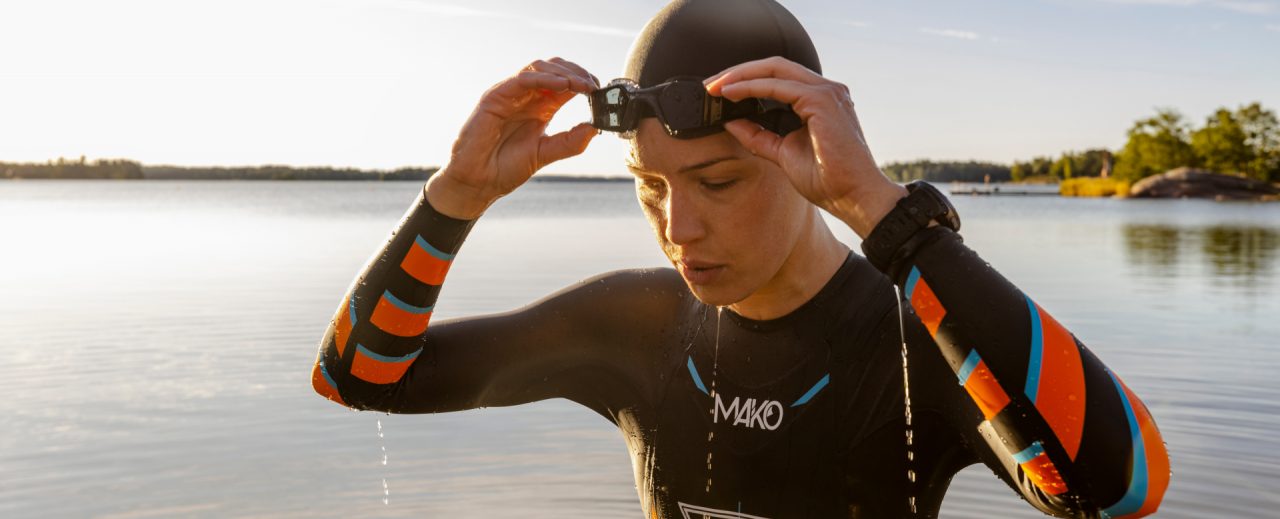
Whether you are wild swimming inland or braving a stretch of ocean, there is a specific Polar sports profile for Open Water Swimming. That’s because the different conditions compared to a swimming pool mean your metrics are measured slightly differently.
Swimming style and stroke rate
You’re unlikely to try doing butterfly laps of a lake, so Polar sports watches only recognize freestyle swimming when you’re in open water.
For your stroke rate, your watch records the average number of strokes and the maximum number you did in a minute for the whole duration of your swim.
Pace and distance
This is where your GPS functionality comes in handy. Pace and distance are tracked this way for open water swimming so that you can still have the insights you need for each session.
Route
Forget the endless laps – you are really going places with open water swimming. Your Polar sports watch will record your entire swim with GPS tracking, which means you can see a map of where you went afterward in Polar Flow.
Interestingly, GPS tracking doesn’t work when your watching-wearing hand is in the water. Instead, it simply picks up the data when your hand is out of the water (or very close to the surface). You may notice that the data from the same route may vary a little from day to day. That’s because factors such as water conditions or satellite positions can affect the accuracy of the GPS data.
Heart rate
Watch your heart rate zoom to zones 3 or 4 when you jump in the cold ocean for an outdoor swim. Tracking your heart rate under these conditions can be very interesting – and again, you should keep your watch on extra snuggly (for accuracy, not because it’s likely to come off and end up at the bottom of the deep blue sea).
If you liked this post, don’t forget to share so that others can find it, too.
Or give it a thumbs up!
I like this article
Please note that the information provided in the Polar Blog articles cannot replace individual advice from health professionals. Please consult your physician before starting a new fitness program.
